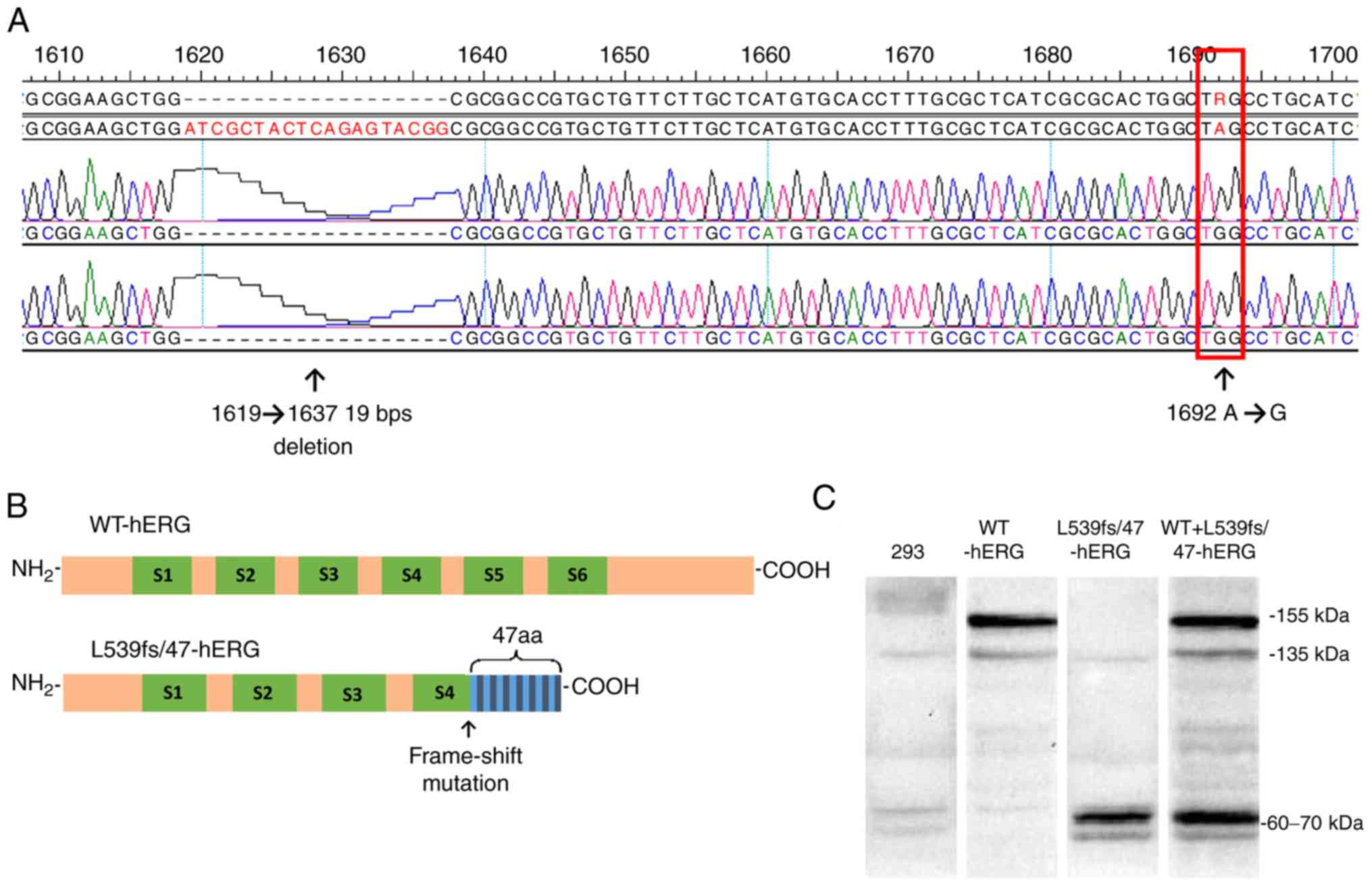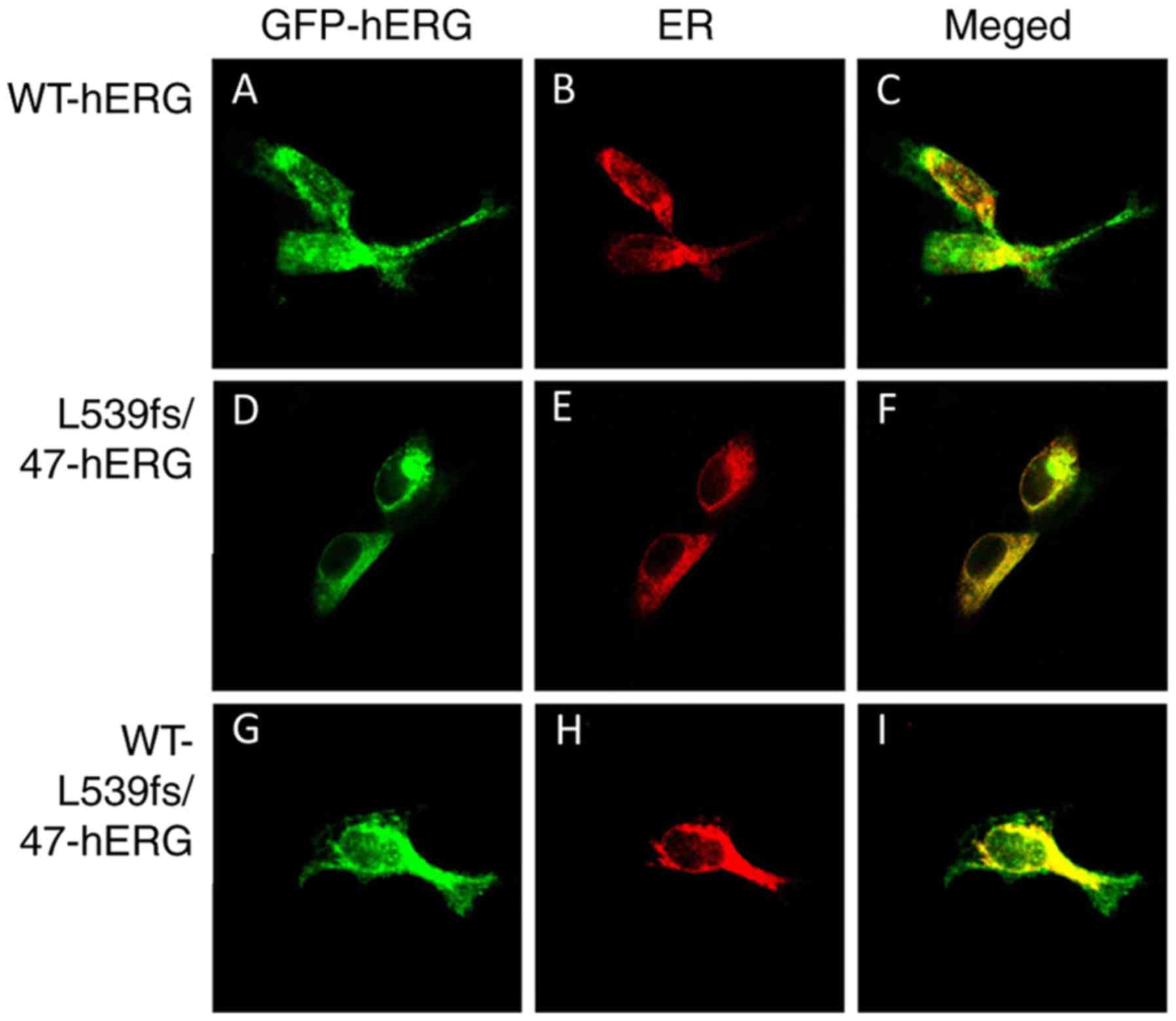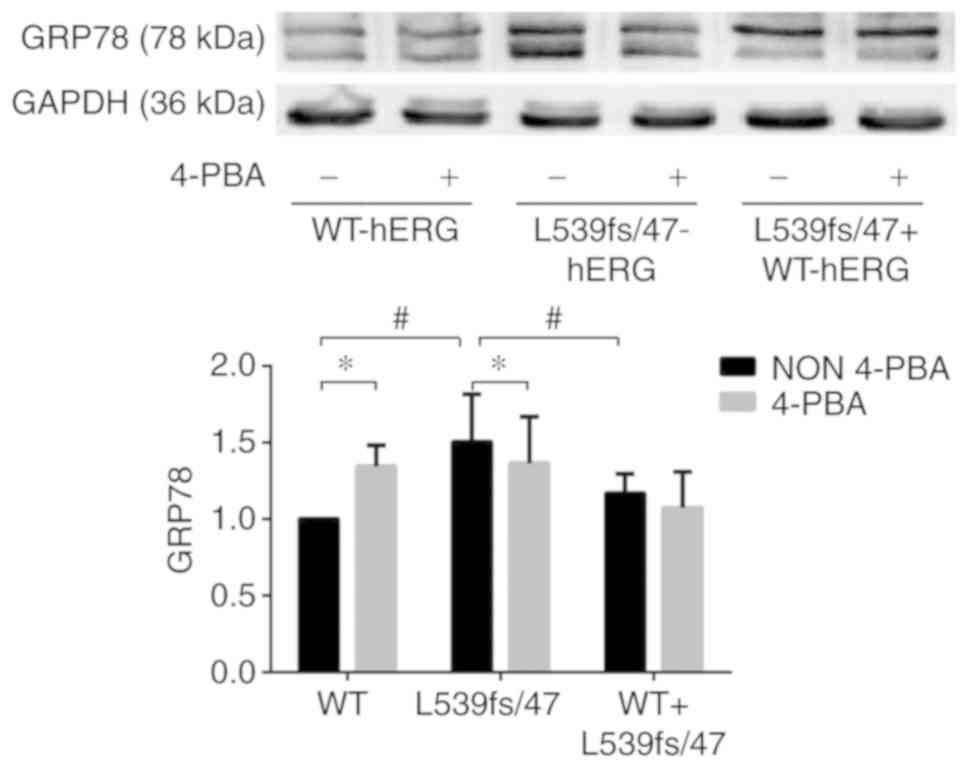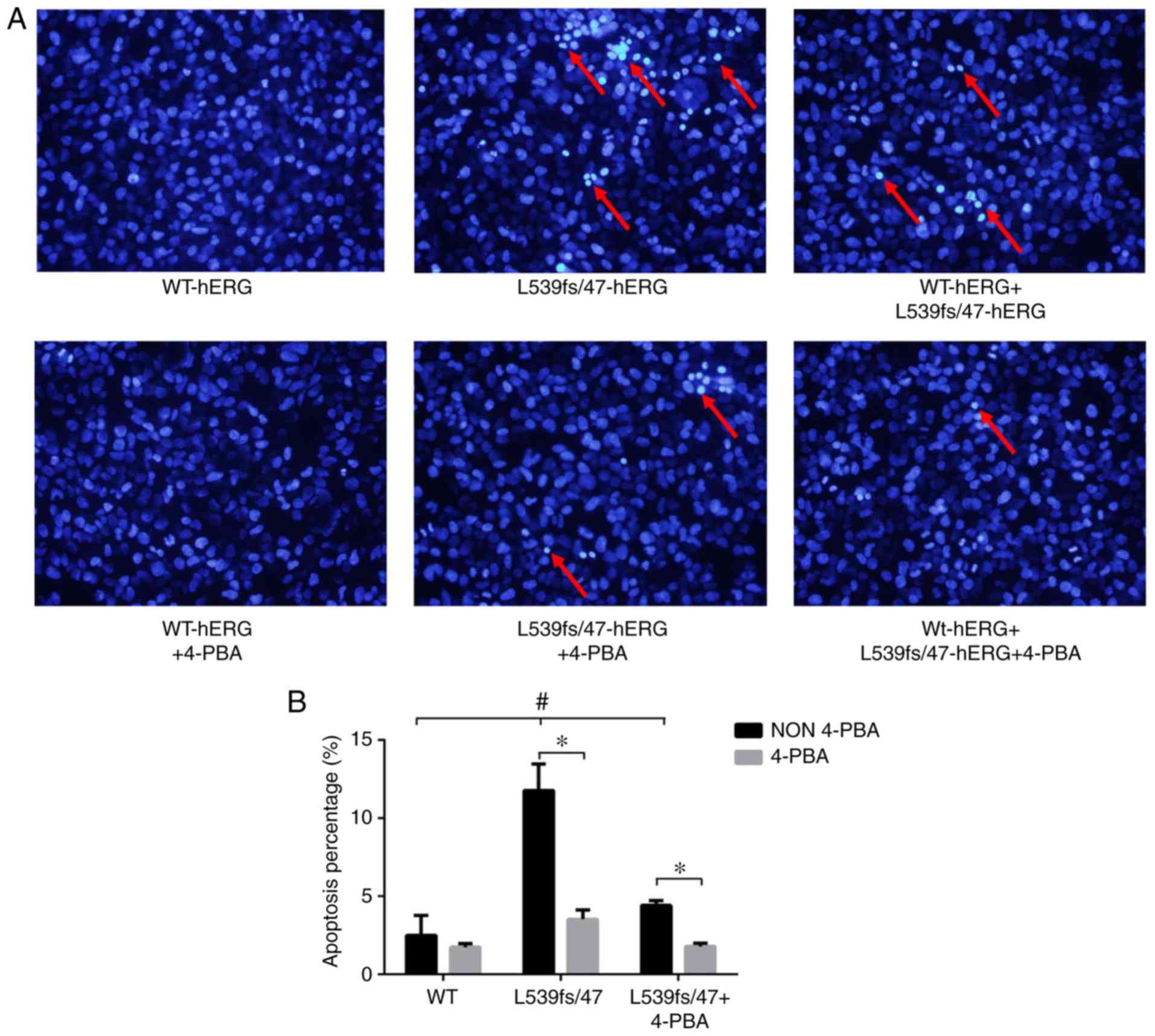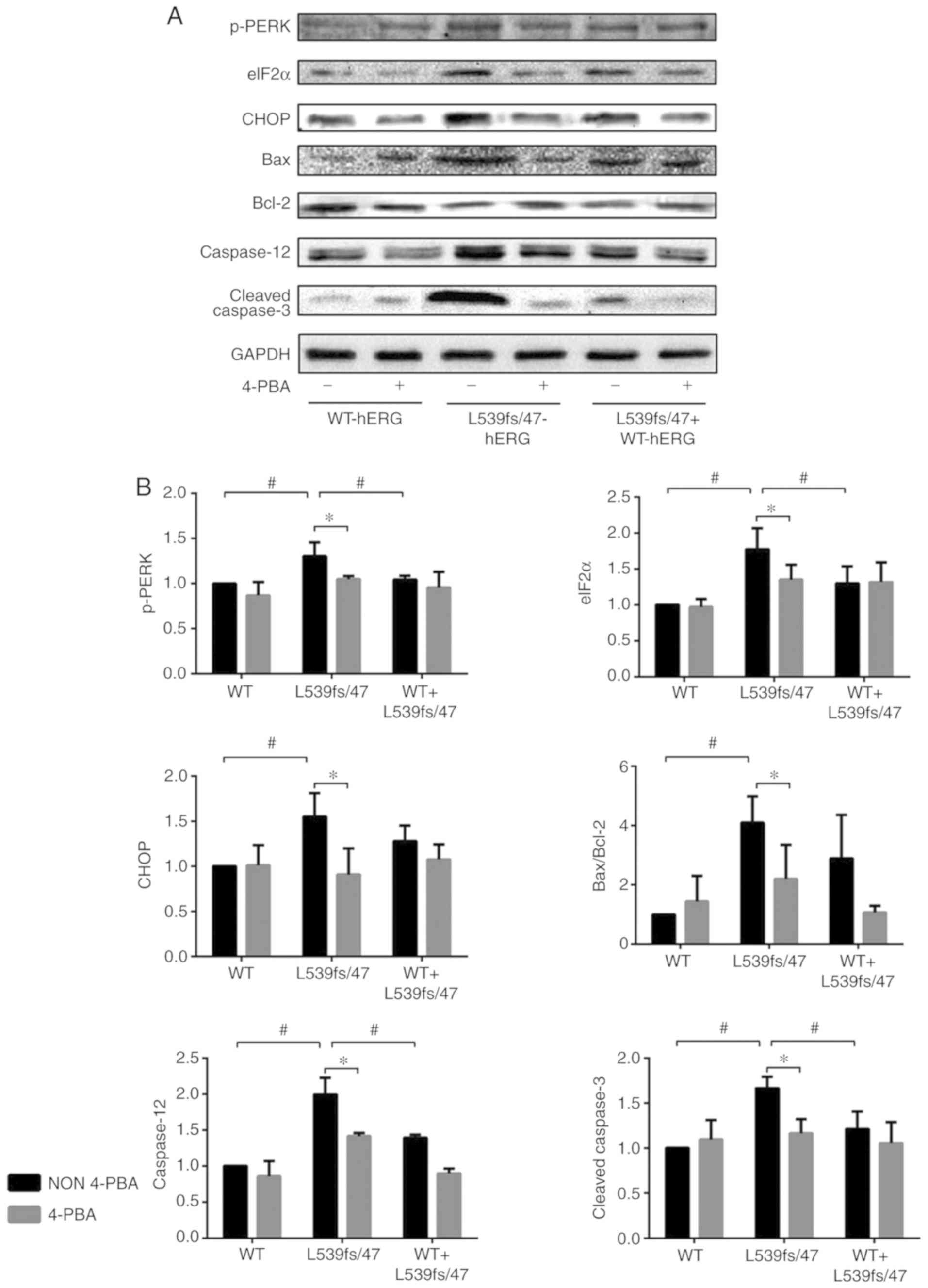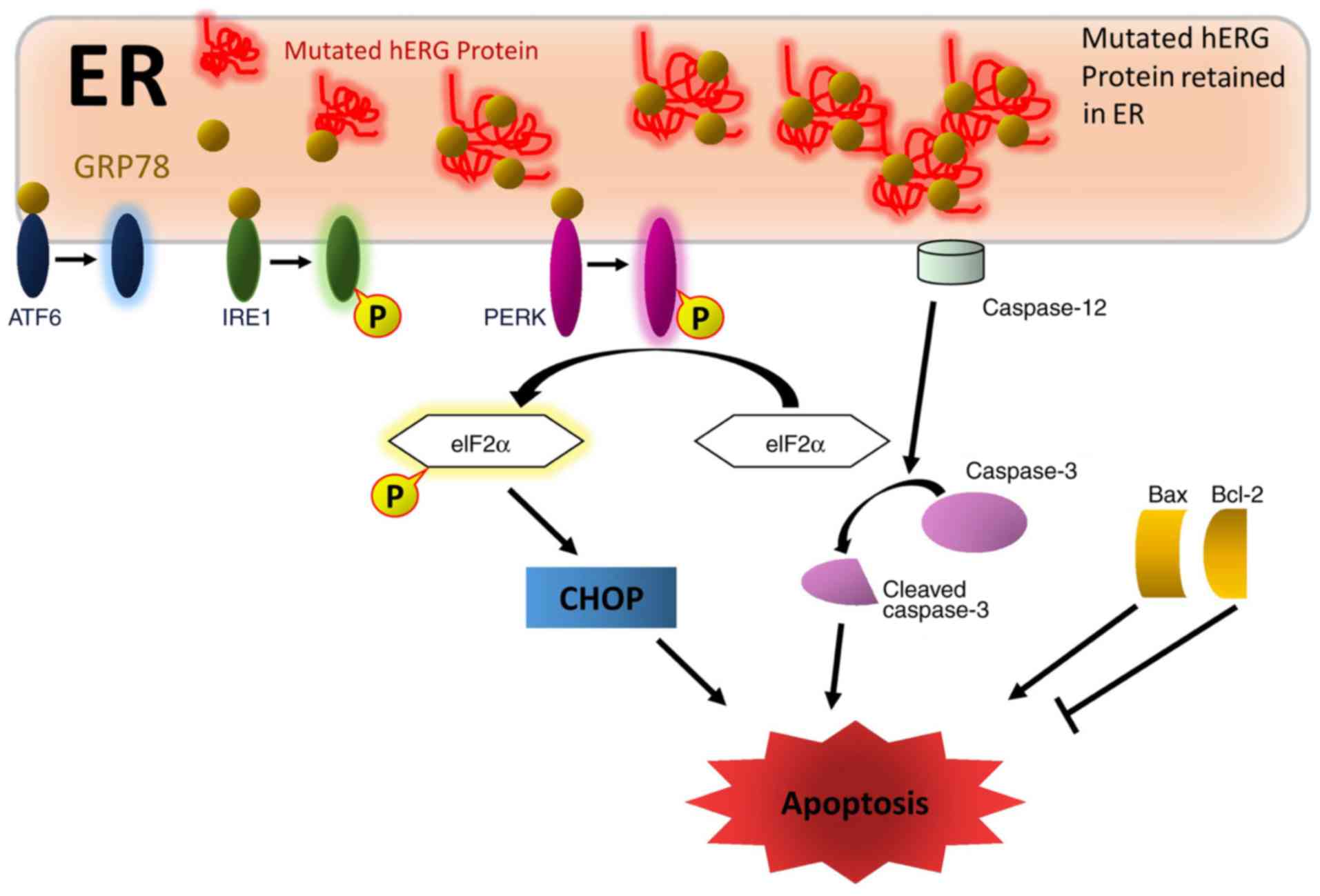|
1
|
Ackerman MJ, Priori SG, Willems S, Berul
C, Brugada R, Calkins H, Camm AJ, Ellinor PT, Gollob M, Hamilton R,
et al: HRS/EHRA expert consensus statement on the state of genetic
testing for the channelopathies and cardiomyopathies: This document
was developed as a partnership between the Heart Rhythm Society
(HRS) and the european Heart Rhythm association (EHRA). Europace.
13:1077–1109. 2011. View Article : Google Scholar : PubMed/NCBI
|
|
2
|
John RM, Tedrow UB, Koplan BA, Albert CM,
Epstein LM, Sweeney MO, Miller AL, Michaud GF and Stevenson WG:
Ventricular arrhythmias and sudden cardiac death. Lancet.
380:1520–1529. 2012. View Article : Google Scholar : PubMed/NCBI
|
|
3
|
Nador F, Beria G, De Ferrari GM,
Stramba-Badiale M, Locati EH, Lotto A and Schwartz PJ: Unsuspected
echocardiographic abnormality in the long QT syndrome. Diagnostic,
prognostic, and pathogenetic implications. Circulation.
84:1530–1542. 1991. View Article : Google Scholar : PubMed/NCBI
|
|
4
|
Haugaa KH, Amlie JP, Berge KE, Leren TP,
Smiseth OA and Edvardsen T: Transmural differences in myocardial
contraction in long-QT syndrome: Mechanical consequences of ion
channel dysfunction. Circulation. 122:1355–1363. 2010. View Article : Google Scholar : PubMed/NCBI
|
|
5
|
Zaklyazminskaya E and Dzemeshkevich S: The
role of mutations in the SCN5A gene in cardiomyopathies. Biochim
Biophys Acta. 1863:1799–1805. 2016. View Article : Google Scholar : PubMed/NCBI
|
|
6
|
Walls J, Sanatani S and Hamilton R:
Post-hoc diagnosis of congenital long QT syndrome in patients with
tetralogy of Fallot. Pediatr Cardiol. 26:107–110. 2005. View Article : Google Scholar : PubMed/NCBI
|
|
7
|
Murugan SJ, Parsons JM and Bennett C: A
case of long QT syndrome associated with familial occurrence of
persistent patency of the arterial duct. Cardiol Young. 15:309–311.
2005. View Article : Google Scholar : PubMed/NCBI
|
|
8
|
James TN, Terasaki F, Pavlovich ER and
Vikhert AM: Apoptosis and pleomorphic micromitochondriosis in the
sinus nodes surgically excised from five patients with the long QT
syndrome. J Lab Clin Med. 122:309–323. 1993.PubMed/NCBI
|
|
9
|
Zhang T, Yong SL, Drinko JK, Popović ZB,
Shryock JC, Belardinelli L and Wang QK: LQTS mutation N1325S in
cardiac sodium channel gene SCN5A causes cardiomyocyte apoptosis,
cardiac fibrosis and contractile dysfunction in mice. Int J
Cardiol. 147:239–245. 2011. View Article : Google Scholar
|
|
10
|
Teng GQ, Zhao X, Lees-Miller JP, Quinn FR,
Li P, Rancourt DE, London B, Cross JC and Duff HJ: Homozygous
missense N629D hERG (KCNH2) potassium channel mutation causes
developmental defects in the right ventricle and its outflow tract
and embryonic lethality. Circ Res. 103:1483–1491. 2008. View Article : Google Scholar : PubMed/NCBI
|
|
11
|
Kim I, Xu W and Reed JC: Cell death and
endoplasmic reticulum stress: Disease relevance and therapeutic
opportunities. Nat Rev Drug Discov. 7:1013–1030. 2008. View Article : Google Scholar : PubMed/NCBI
|
|
12
|
Wang S and Kaufman RJ: The impact of the
unfolded protein response on human disease. J Cell Biol.
197:857–867. 2012. View Article : Google Scholar : PubMed/NCBI
|
|
13
|
Oltvai ZN, Milliman CL and Korsmeyer SJ:
Bcl-2 heterodimerizes in vivo with a conserved homolog, Bax, that
accelerates programmed cell death. Cell. 74:609–619. 1993.
View Article : Google Scholar : PubMed/NCBI
|
|
14
|
Xu C, Bailly-Maitre B and Reed JC:
Endoplasmic reticulum stress: Cell life and death decisions. J Clin
Invest. 115:2656–2664. 2005. View
Article : Google Scholar : PubMed/NCBI
|
|
15
|
Nakagawa T, Zhu H, Morishima N, Li E, Xu
J, Yankner BA and Yuan J: Caspase-12 mediates
endoplasmic-reticulum-specific apoptosis and cytotoxicity by
amyloid-beta. Nature. 403:98–103. 2000. View Article : Google Scholar : PubMed/NCBI
|
|
16
|
Budihardjo I, Oliver H, Lutter M, Luo X
and Wang X: Biochemical pathways of caspase activation during
apoptosis. Annu Rev Cell Dev Biol. 15:269–290. 1999. View Article : Google Scholar : PubMed/NCBI
|
|
17
|
Bohnen MS, Peng G, Robey SH, Terrenoire C,
Iyer V, Sampson KJ and Kass RS: Molecular pathophysiology of
congenital long QT syndrome. Physiol Rev. 97:89–134. 2017.
View Article : Google Scholar :
|
|
18
|
Keller SH, Platoshyn O and Yuan JX: Long
QT syndrome-associated I593R mutation in HERG potassium channel
activates ER stress pathways. Cell Biochem Biophys. 43:365–377.
2005. View Article : Google Scholar : PubMed/NCBI
|
|
19
|
Wang Y, Huang X, Zhou J, Yang X, Li D, Mao
H, Sun HH, Liu N and Lian J: Trafficking-deficient G572R-hERG and
E637K-hERG activate stress and clearance pathways in endoplasmic
reticulum. PLoS One. 7:e298852012. View Article : Google Scholar : PubMed/NCBI
|
|
20
|
Zhang A, Sun C, Zhang L, Lv Y, Xue X, Li
G, Cui C and Yan GX: L539 fs/47, a truncated mutation of human
ether-a-go-go-related gene (hERG), decreases hERG ion channel
currents in HEK 293 cells. Clin Exp Pharmacol Physiol. 40:28–36.
2013. View Article : Google Scholar
|
|
21
|
Abdelwahid E, Pelliniemi LJ and Jokinen E:
Cell death and differentiation in the development of the
endocardial cushion of the embryonic heart. Microsc Res Tech.
58:395–403. 2002. View Article : Google Scholar : PubMed/NCBI
|
|
22
|
Travers JG, Kamal FA, Robbins J, Yutzey KE
and Blaxall BC: Cardiac fibrosis: The fibroblast awakens. Circ Res.
118:1021–1040. 2016. View Article : Google Scholar : PubMed/NCBI
|
|
23
|
Liu X, Kwak D, Lu Z, Xu X, Fassett J, Wang
H, Wei Y, Cavener DR, Hu X, Hall J, et al: Endoplasmic reticulum
stress sensor protein kinase R-like endoplasmic reticulum kinase
(PERK) protects against pressure overload-induced heart failure and
lung remodeling. Hypertension. 64:738–744. 2014. View Article : Google Scholar : PubMed/NCBI
|
|
24
|
Jehle J, Schweizer PA, Katus HA and Thomas
D: Novel roles for hERG K(+) channels in cell proliferation and
apoptosis. Cell Death Dis. 2:e1932011. View Article : Google Scholar : PubMed/NCBI
|
|
25
|
Liu J, Dayi HU, Liu W, Li C, Qin X, Li Y,
Li Z, Li L, Dong W, Qi Y and Wang Q: Clinical characters and
mutation analysis of potassium channel genes KCNH2 in 77 pedigrees
of Chinese with long QT syndrome. Sci Technol Eng. 11:1529–1533.
2006.In Chinese.
|
|
26
|
Li G, Mongillo M, Chin KT, Harding H, Ron
D, Marks AR and Tabas I: Role of ERO1-alpha-mediated stimulation of
inositol 1,4,5-triphosphate receptor activity in endoplasmic
reticulum stress-induced apoptosis. J Cell Biol. 186:783–792. 2009.
View Article : Google Scholar : PubMed/NCBI
|
|
27
|
Lam M, Dubyak G, Chen L, Nunez G, Miesfeld
RL and Distelhorst CW: Evidence that BCL-2 represses apoptosis by
regulating endoplasmic reticulum-associated Ca2+ fluxes.
Proc Natl Acad Sci USA. 91:6569–6573. 1994. View Article : Google Scholar
|
|
28
|
Ma S, Zhao Y, Wei Y and Sun C: GW28-e0322
increasing calpain expression regulates hERG mutation L539fs/47
induced cardiomyocyte apoptosis. J Am Coll Cardiol. 70:C6–C7. 2017.
View Article : Google Scholar
|















